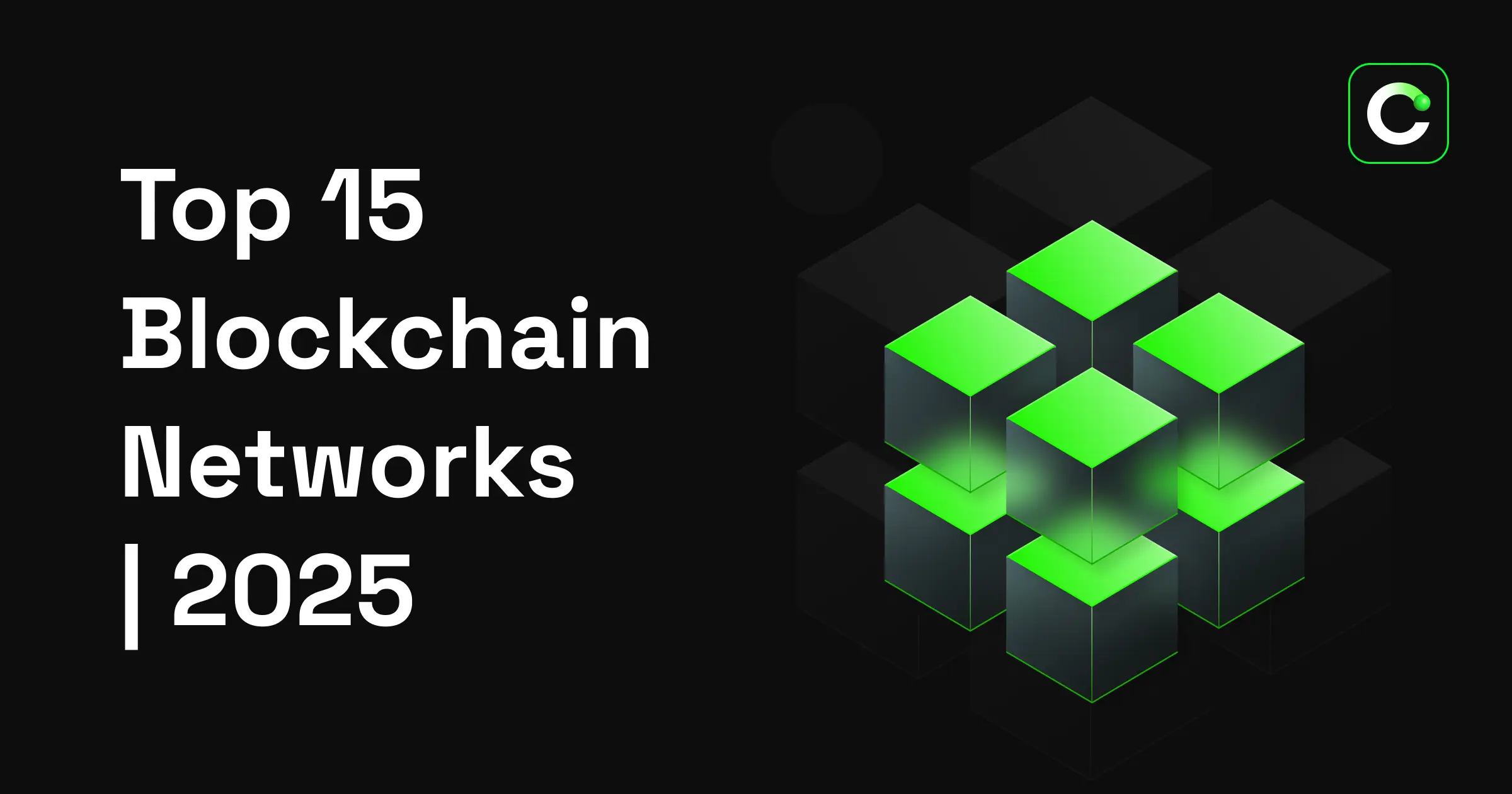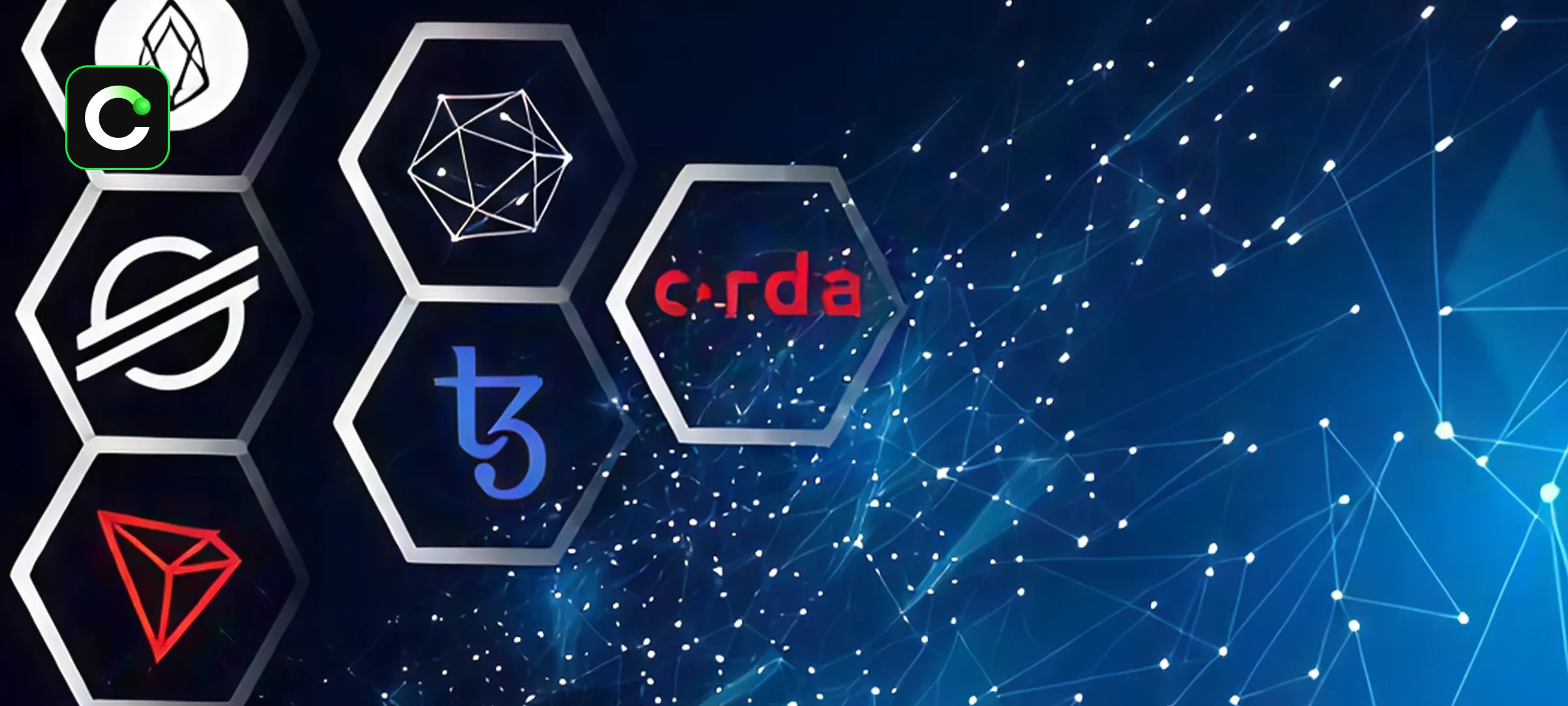Top 15 Blockchain Networks : 2025 

Cryptocurrency Exchange

Blockchain technology has rapidly evolved in recent years as the cornerstone of the cryptocurrency ecosystem. Different networks offer various solutions in terms of scalability, speed, and security based on user needs. As of 2025, the most popular blockchain networks continue to play an active role not only in crypto asset transfers but also in decentralized finance (DeFi), NFT marketplaces, gaming, and data security.
What is Blockchain?
Blockchain is a distributed ledger system where data is stored without reliance on a central authority. Transactions are grouped into blocks and secured through a chain structure. This method allows users to conduct transactions transparently and securely without the need for third parties. Beyond cryptocurrencies, technology is also applied in logistics, healthcare, finance, and public services.
Why Are Blockchain Networks Important?

Blockchain networks form the backbone of the digital economy, extending far beyond cryptocurrencies. They enable users to transfer value, execute transactions without intermediaries through smart contracts, and access
decentralized applications (dApps). Each blockchain network offers different advantages based on its design: some stand out for low fees, while others focus on speed or security. This diversity helps both developers and users choose the most suitable network, accelerating the adoption of technology.
The 15 Most Popular Blockchain Networks
Ethereum (ETH)
Ethereum is one of the largest blockchain networks powering decentralized applications and smart contracts. Launched in 2015, it is considered the pioneer of innovation within the crypto ecosystem.
-
Use Cases: DeFi applications, NFT marketplaces, DAOs, smart contracts.
-
Key Features: Large developer community, smart contract infrastructure, high security.
-
Ecosystem & Developer Support: Thousands of dApps, strong community, Ethereum Foundation backing.
-
Advantages: First smart contract infrastructure, global recognition, high liquidity.
-
Challenges / Criticism: High gas fees, scalability issues.
Solana (SOL)
Solana is a blockchain network known for its high speed and low-cost transactions. It has become especially popular for DeFi and NFT projects.
-
Use Cases: DeFi, NFTs, Web3 gaming.
-
Key Features: Low fees per transaction, thousands of transactions per second.
-
Ecosystem & Developer Support: Phantom wallet, Magic Eden NFT platform.
-
Advantages: Fast and low-cost transactions.
-
Challenges / Criticism: Network outages, centralization concerns.
Bitcoin (BTC)
Bitcoin is the first blockchain network and is regarded as “digital gold.” With its decentralized structure, it is considered one of the most secure networks.
-
Use Cases: Digital value storage, transfers.
-
Key Features: Highest market capitalization, strong security.
-
Ecosystem & Developer Support: Lightning Network (Layer-2 solutions).
-
Advantages: Reliability, global acceptance.
-
Challenges / Criticism: Slow transaction speed, limited smart contract support.
Litecoin (LTC)
Launched in 2011,
Litecoin was designed as a faster and lower-cost version of Bitcoin. It is one of the oldest altcoins in the crypto ecosystem.
-
Use Cases: Micropayments, transfers.
-
Key Features: Faster block confirmation, low transaction fees.
-
Ecosystem & Developer Support: Long-standing community support.
-
Advantages: Reliable and well-established projects.
-
Challenges / Criticism: Less popular than Bitcoin, limited use cases.
Ripple (XRP)
Ripple is designed for fast and low-cost international money transfers, making it a preferred choice among financial institutions.
-
Use Cases: Cross-border transfers, payment solutions.
-
Key Features: Transactions in seconds, low fees.
-
Ecosystem & Developer Support: RippleNet partnerships.
-
Advantages: Trusted solution for financial institutions.
-
Challenges / Criticism: Ongoing regulatory lawsuits in the U.S.
Chainlink (LINK)
Chainlink is an oracle network that provides smart contracts with access to real-world data. It has played a vital role in the growth of DeFi.
-
Use Cases: DeFi, data validation in smart contracts.
-
Key Features: Reliable data feeds, multi-blockchain support.
-
Ecosystem & Developer Support: Widely used in DeFi projects.
-
Advantages: Leader in the oracle space.
-
Challenges / Criticism: Criticism over centralized node structure.
Tron (TRX)
Tron is known for high transaction speed and low fees. It has gained traction, particularly through USDT transfers to its TRC20 standard.
-
Use Cases: DeFi, stablecoin transfers, content platforms.
-
Key Features: Low fees, high transaction capacity.
-
Ecosystem & Developer Support: TRC20 projects, JustLend.
-
Advantages: Stablecoin integration, user-friendly.
-
Challenges / Criticism: Centralization and influence of its founder.
Avalanche (AVAX)
Avalanche allows the creation of custom blockchains through its Subnet architecture. Its speed and flexibility make it attractive for enterprise solutions and large-scale projects.
-
Use Cases: DeFi, NFTs, gaming projects.
-
Key Features: Subnet architecture, high speed.
-
Ecosystem & Developer Support: Ava Labs support, growing DeFi ecosystem.
-
Advantages: Scalability, fast transactions.
-
Challenges / Criticism: Network congestion, strong competition.
Arbitrum (ARB)
Arbitrum is a Layer-2 solution built on Ethereum, reducing transaction costs while preserving security. With its multiple network options, it serves different user needs.
-
Use Cases: DeFi, dApps.
-
Key Features: Ethereum compatibility, low fees.
-
Ecosystem & Developer Support: Arbitrum One, Arbitrum Nova.
-
Advantages: Easy integration for Ethereum-based projects.
-
Challenges / Criticism: Strong competition among Layer-2s.
Polygon (POL)
Polygon is one of the most widely adopted Ethereum scaling solutions. With its zkEVM technology and multi-chain architecture, it provides flexibility for developers.
-
Use Cases: DeFi, NFTs, Web3 projects.
-
Key Features: Multi-chain support, Ethereum compatibility.
-
Ecosystem & Developer Support: zkEVM projects, MATIC token.
-
Advantages: Wide adoption, low fees.
-
Challenges / Criticism: Occasional network slowdowns, competition.
Near Protocol (NEAR)
Near Protocol addresses scalability with its sharing technology. With Aurora EVM integration, it allows Ethereum-compatible projects to operate seamlessly.
-
Use Cases: DeFi, NFTs, Web3 apps.
-
Key Features: Sharding, low-cost transactions.
-
Ecosystem & Developer Support: Aurora EVM integration.
-
Advantages: Developer-friendly, fast confirmations.
-
Challenges / Criticism: Competitive market, smaller user base.
The Open Network (TON)
TON integrates with the Telegram ecosystem, giving it access to millions of users. It stands out with its fast transactions and seamless messaging app integration.
-
Use Cases: Micropayments, messaging integration, dApps.
-
Key Features: Telegram integration, high speed.
-
Ecosystem & Developer Support: TON Foundation, Telegram support.
-
Advantages: Access to Telegram’s large user base.
-
Challenges / Criticism: Still a developing ecosystem.
Sui Ecosystem (SUI)
Sui is a next-generation blockchain built for high performance through parallel execution technology. Developed by Mysten Labs, it aims to provide scalability for modern applications.
-
Use Cases: Gaming, DeFi, NFTs.
-
Key Features: Parallel execution.
-
Ecosystem & Developer Support: Backed by Mysten Labs.
-
Advantages: High-performance infrastructure.
-
Challenges / Criticism: Still in its early stages.
Optimism (OP)
Optimism is one of the most popular Layer-2 solutions on Ethereum. It reduces costs significantly with rollup technology while maintaining security.
-
Use Cases: DeFi, dApps.
-
Key Features: Rollup technology, low transaction fees.
-
Ecosystem & Developer Support: Ethereum-compatible developer tools.
-
Advantages: Strong security, low cost.
-
Challenges / Criticism: Competition in the Layer-2 market.
Mantle (MNT)
Mantle is a modular blockchain supported by the BitDAO community. Its architecture is designed to enhance scalability and developer flexibility.
-
Use Cases: DeFi, Web3 projects.
-
Key Features: Modular design, low fees.
-
Ecosystem & Developer Support: Backed by BitDAO.
-
Advantages: Developer-friendly, high performance.
-
Challenges / Criticism: Still a relatively new project.
Conclusion

Blockchain networks play a crucial role in the growth of the crypto ecosystem with their diverse strengths in speed, security, and scalability. From established projects like Ethereum and Bitcoin to new-generation
Layer-2 solutions, the ecosystem continues to expand rapidly. As users explore these technologies further, they gain better opportunities to take advantage of the innovations ahead.
Legal Notice
The information, comments, and evaluations contained in this content do not constitute investment advice. This content is not intended to be prescriptive in any way and is intended to provide general information. It does not constitute investment advice. CoinTR cannot be held responsible for any transactions made based on this information or any losses that may arise.
Recommended
- Cryptocurrency ExchangeWhat is a Stablecoin? 2025 Stablecoin List The cryptocurrency market is known for its high volatility, posing significant risks for investors. Stablecoins provide a secure alternative by maintaining a stable value. Typically pegged to fiat currencies, precious metals, or other assets, stablecoins serve as a safe haven for investors and traders. But what is a stablecoin, how does it work, and what types exist? Let’s dive into the details. What is a Stablecoin? A stablecoin is a type of cryptocurrency designed to maintain a stable value,
2024-11-24
- Cryptocurrency ExchangeWhat are Bear and Bull Markets? In financial markets, the terms bear market and bull market are often used to describe overall trends. A bear market represents periods of declining prices, while a bull market refers to rising trends. These terms are particularly important in the cryptocurrency market. But what exactly is a bear market, what is a bull market, and how long do these periods last? Here’s a detailed guide. What is a Bear Market? A bear market is a period when asset prices experience a prolonged decline, typically
2024-11-24
- Cryptocurrency ExchangeWhat is Blockchain Technology? Blockchain is a digital ledger technology where data is stored on a distributed network without the need for central authority. As the backbone of cryptocurrencies such as Bitcoin, blockchain is now being used not only in the financial world but also across many different industries. Blocks record transactions, and each block is linked to the previous one, forming a chain. This structure makes data immutable, tamper-proof, and transparent. Key Features: Decentralization: Not controlled by a s
2024-11-28


